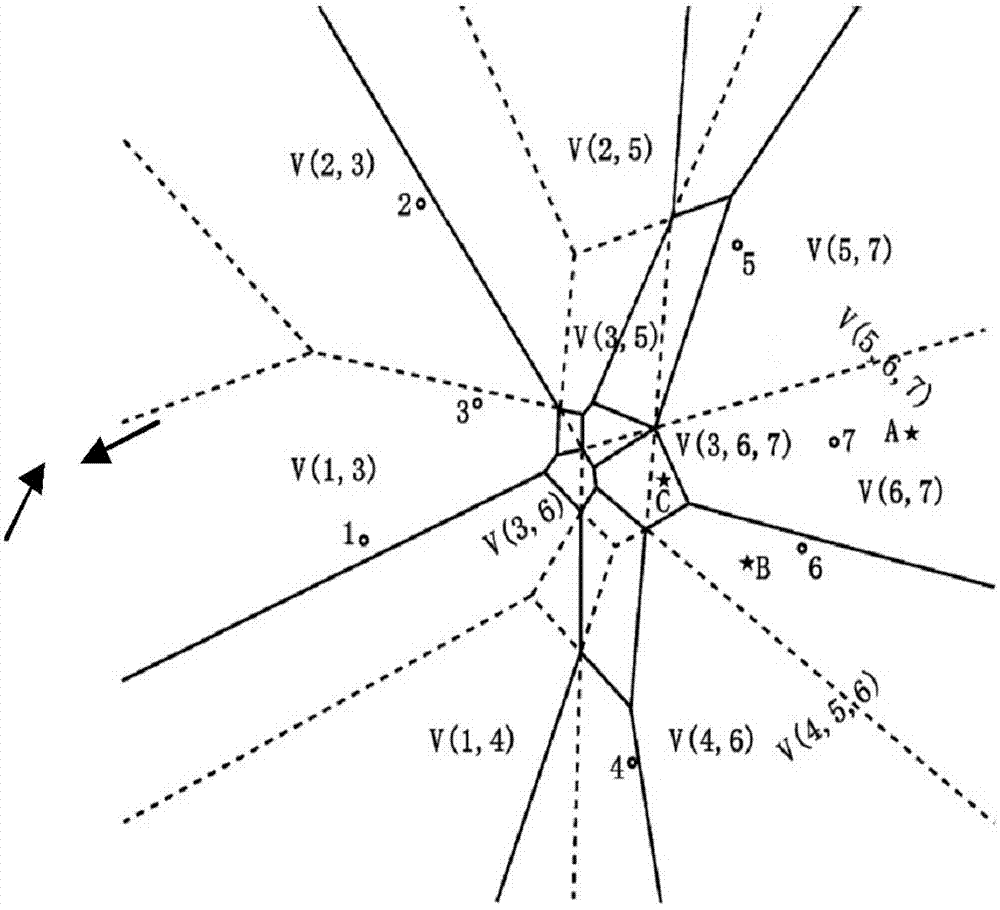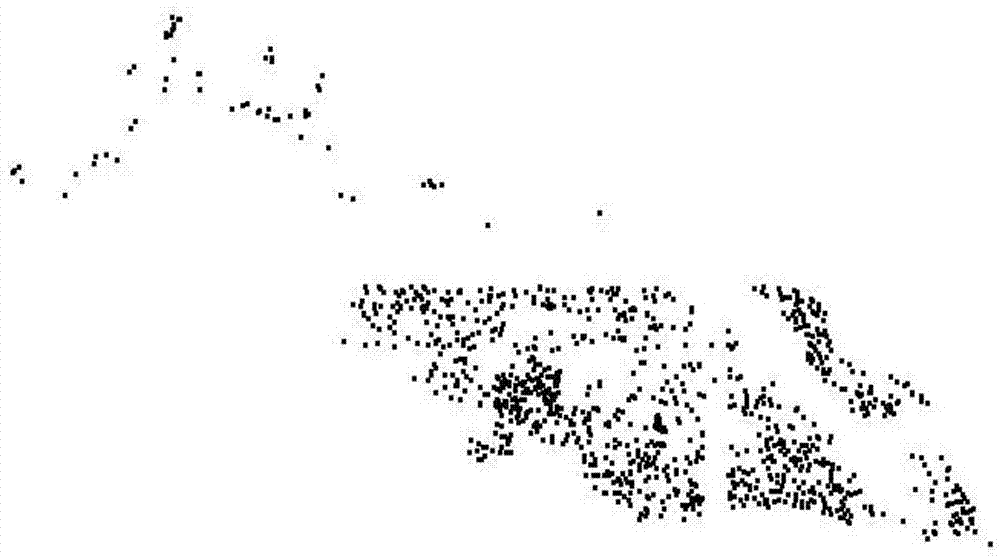RkNN (reverse k nearest neighbor) inquiring method based on Voronoi diagram
A query method and nearest neighbor technology, applied in special data processing applications, instruments, electrical digital data processing, etc., can solve problems such as low efficiency and non-support
- Summary
- Abstract
- Description
- Claims
- Application Information
AI Technical Summary
Problems solved by technology
Method used
Image
Examples
Embodiment 1
[0036] Step 1: according to query site set, generate corresponding m order Voronoi diagram, method is: existing m order Voronoi diagram generating method; Because of each m order Voronoi diagram in the present invention can query R(k-1)NN, RkNN And the results of R(k+1)NN, so the Voronoi diagrams of order 1, 3, 6, 9... are generated according to the needs of the query. To generate 1, 3, 6, 9... order Voronoi diagrams according to the needs of the query.
[0037] Step 2: Import the query object data set, the method is: read the data file and display the data;
[0038] Step 3: Enter the k value and the coordinates of the query point q to get the RkNN query result; where:
[0039] When k=m, all query objects within the polygon containing station q are the results,
[0040] When k k, then it is the result, otherwise not,
[0041] When k>m, all the query objects in the Voronoi polygons containing the site q are the results; and check the query objects in the adjacent polygons of...
Embodiment 2
[0046] Step 1: Generate Voronoi graphic data according to the CD human landscape site collection, and save the file.
[0047] The document saved by the generate graphics module is as follows Figure 4 As shown, the data in the figure is the data of the third-order Voronoi diagram. Each row of data may describe a Voronoi polygon. The data in each row is divided into three parts, namely the generator, the vertices of the Voronoi polygon and the MBR. Each part of data is separated by ":". Let's look at the first row of data, the 6 sets of numbers before the first ":" are the generators of the polygon. Every two sets of numbers represent a pair of coordinates, because it is a polygon of order 3, and 3 pairs of coordinates represent exactly 3 generators. The data before the second ":" represents the vertices of the polygon, and also every two sets of numbers represent a pair of coordinates. The remaining 4 sets of data represent the MBR of the polygon, the first two groups rep...
PUM
 Login to View More
Login to View More Abstract
Description
Claims
Application Information
 Login to View More
Login to View More - R&D
- Intellectual Property
- Life Sciences
- Materials
- Tech Scout
- Unparalleled Data Quality
- Higher Quality Content
- 60% Fewer Hallucinations
Browse by: Latest US Patents, China's latest patents, Technical Efficacy Thesaurus, Application Domain, Technology Topic, Popular Technical Reports.
© 2025 PatSnap. All rights reserved.Legal|Privacy policy|Modern Slavery Act Transparency Statement|Sitemap|About US| Contact US: help@patsnap.com



